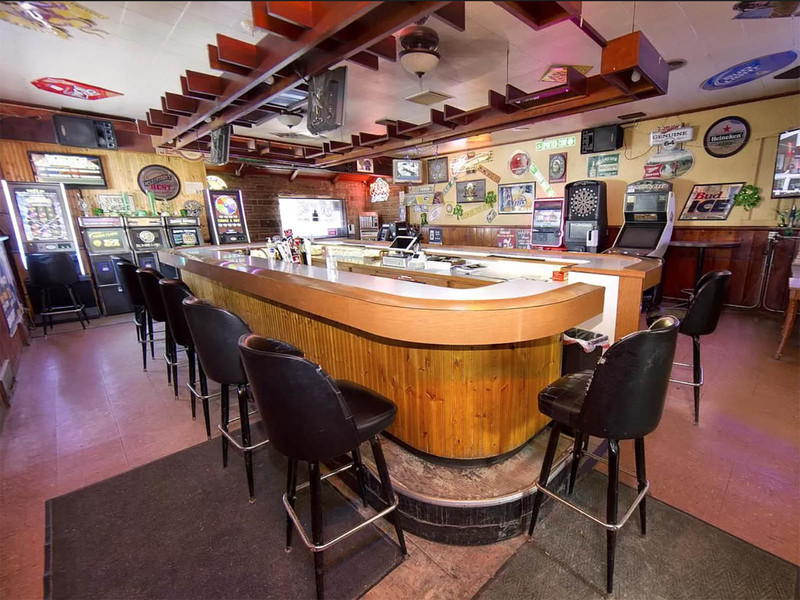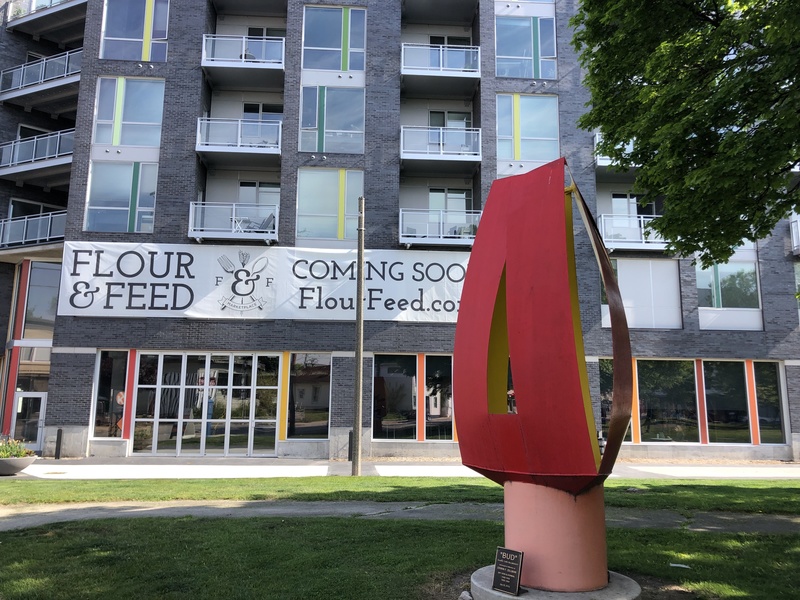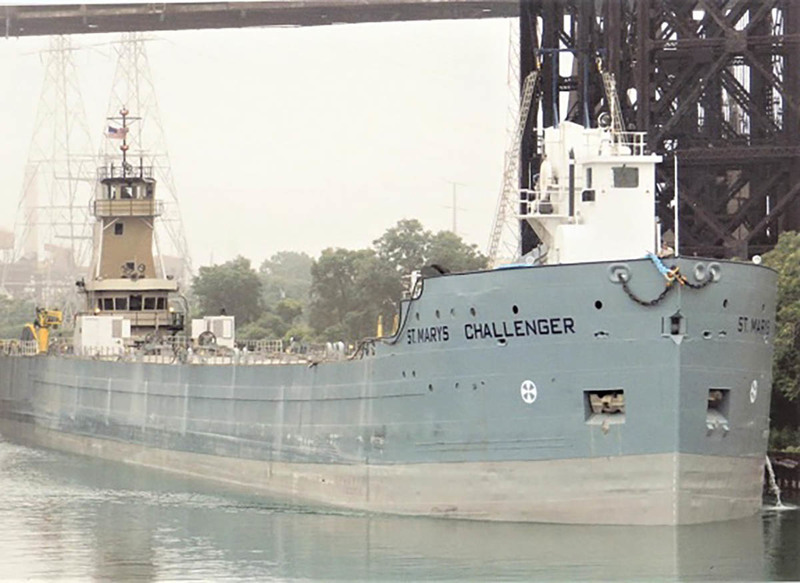Urban Spelunking is brought to you by Nicolet Law.
When a sparkling new Bay View Library opened on Kinnickinnic Avenue in October 1993, the neighborhood rejoiced, and rightfully so. The new place is a bright and welcoming space.
But it also spelled the end of an era a few blocks away where the Llewellyn Library had served Bay View for eight decades at 907 E. Russell Ave.
The Milwaukee Department of City Development has issued an RFP for that 1913-4 building, hoping to find a buyer that will do something positive at the site, located directly across from Bay View High School.
The listing price is $330,000 for the 8,234-square-foot building in the heart of Bay View.
Proposals are due at noon Tuesday, July 30. Check the listing for details.
According to the listing, the property must be taxable after it is sold, meaning it can't have a tax-exempt use, such as a church.
As with most properties for sale by the city, it can't be used as a parking lot, pawnshop, cigarette or cigar shop, gun shop, tavern, liquor store, currency exchange, payday or auto-title loan store, medical service facility, daycare facility or anything, of course, prevented by zoning.
Whoever buys it will be responsible for hosting a meeting with neighborhood residents to discuss its future and must complete renovation work within two years of the closing of the sale.
There will be two open houses at the former library, too, on June 27 at noon and on July 9 at 4 p.m.
Here's what you'll be looking at...
A little history
The roots of the Llewellyn Library lie in the history of the village of Bay View, incorporated in 1879 around the Milwaukee Iron Co.’s Bay View rolling mill, which had been founded 12 years earlier.
The library was begun in 1874 by Beulah Brinton in her Superior Street home, which had also served as a settlement house for immigrants arriving to work in the mill, where Brinton’s husband, Warren, had worked as a manager since 1872.
In addition to offering a variety of classes and recreation to local workers and their families, Brinton collected books for the library.
After the incorporation of the village, Brinton reorganized the library in a new location on Potter Avenue between Delaware and Wentworth (currently the site of Goodkind), calling it the Bay View Reading Room, which fell under the purview of the Bay View Library Association. For a time it also occupied space in a grocery store on Superior, between Russell and Pryor.
In 1887, Bay View became Milwaukee’s 17th Ward and Brinton’s 980 books became part of the fledgling Milwaukee Public Library.
But MPL already had the same books and decided to send them back to Bay View, where they would form the foundation of the city’s first neighborhood branch library, under the supervision of the former librarian William Hegerty, who earned $5 a month.
In 1896, the library moved to 2645 S. Kinnickinnic Ave. It also would be located for a time in the 1899 Dover Street School and, beginning in 1908, in a newly completed store building at 2658 S. Kinnickinnic Ave. owned by George F. Tisdale.
Who was Henry Llewellyn?
Immigrant grocer Henry Llewellyn was an early settler in Bay View, where he arrived in 1864 from Briton Ferry, South Wales with his wife Elizabeth (nee Gower) and sons Silas and John.
From 1872 until 1885, he ran a store on the southeast corner of Russell and Wentworth in a building that still stands today.
Llewellyn was one of 10 Bay Viewers who filed the application to incorporate the Village of Bay View in 1879. In 1885, he served as village assessor and he’s said to have been a member of the village council.
Llewellyn, who died in 1897, was also reportedly a contributor to the village library as far back as the Brinton house days.
In 1913, Llewellyn’s sons Silas J. and John T. Llewellyn – both of whom worked for the rolling mill and had long, successful careers in the iron and steel industry – purchased two lots from Henry J. Lenck and three more from John Meithke on the corner of Lenox and Russell and donated the 120x120-foot site to the City of Milwaukee for the construction of a new library in memory of their father.
By May of that year, plans were unveiled for a $22,000 fireproof, reinforced concrete building, with $8,000 being held in the library treasury, according to one newspaper report, “to be used for repairs and incidental running expenses.”
Architects Van Ryn & DeGelleke were hired and they designed the new library in the then-fashionable Neoclassical Beaux Arts style and perched it atop a berm.
George D. Nuesse, William R. Green and William Lindsey were appointed by the library trustees to, “draw up specifications from the plans,” according to the Milwaukee Sentinel. Those specifications were submitted to the city in October.
In May 1914, the board decided to “have some form of exercises for the opening” of the new branch library, though what, exactly, had not been announced.
The Llewellyn Library
The two-story library, which fronted Russell Avenue, had the look of a Carnegie Library, though it was not funded by Carnegie a grant. A long, two-part staircase led up to the main entrance, creating an almost regal approach.
On the Lenox Street side, another entrance, down a few steps, led to the lower level.
Above the main entrance, stone panels engraved with “Henry Llewellyn Branch Library” and “Erected A.D. 1913” were installed.
The building was the second purpose-built branch library constructed by the City of Milwaukee. The first, on Madison Street, went up in 1909.
The library officially opened on Saturday, Sept. 6, 1914, with, according to a newspaper notice, “a program consisting of addresses and music will be given. Theobald Otjen, William Lindsay, acting president of the school board, and Librarian Charles B. McLenegan will be present and address the gathering. Samuel McKillop (who was the “father” of the MPL branch library system) is arranging the program.”
MPS Superintendent Milton Potter was also tabbed to speak at the 8 p.m. event, standing in for library board president James G. Flanders, who was ill, and Otjen gave a talk called “The Past and the Future.”
The sons of library’s namesake – Silas and John – also attended, and addressed the attendees. McKillop performed the song, “The Spirit Flower.”
The Ladies Auxiliary of the Bay View Civic Association held an informal reception afterward.
The interior, “was nice, modern for its time, with light oak woodwork, steel shelving and high leaded windows,” branch librarian and neighborhood resident Hazel G. Steward would recall later.
A lower level auditorium had seating for 200.
As was – and is – common, the library became a community gathering place, not simply for reading, studying and the borrowing of books, but also as a site for meetings, movie nights and other events, too.
In need of more space and modernization, the library board hired large Milwaukee firm Grassold & Johnson – architects of many schools, offices and other buildings – to design a $120,000 addition to the building in 1958 as part of a city-wide effort to expand the neighborhood library system.
The first phase of a $5.75 million plan that would ultimately build 10 branch libraries included buying land for a relocated Green Bay Avenue Library, as well as construction costs for that facility and the Llewellyn addition.
The plan was “long overdue,” said library board president Edward DeBriae, who was more diplomatic than City Librarian Richard Klug who opined, “our neighborhood library system has been going to pot,” in the Sentinel.
There were 17 libraries in the city at that time, including the Juneau Library, 6500 W. Mount Vernon Ave., which narrowly avoided being closed at the same meeting that led to the approval of the Llewellyn addition.
That addition was cut into the berm on the corner of Russell and Lenox and led to the complete alteration of the main entrance, as well as to much of the interior of the 1913 building, which would now total more than 8,200 square feet of space.
The grand exterior staircase was removed and the main entrance now led into what had been the lower level. A Midcentury interior staircase was added to a bright atrium.
A rededication of the branch – the expansion and remodeling of which ended up costing $150,000 – took place on Saturday, May 9, 1959, with Mayor Frank Zeidler, DeBriae, Klug and others to speak.
“It’s remarkable what they can do with stone and paint, huge sweeps of glass and a decor that suggests reading is a stimulating pleasure rather than a grim duty,” said veteran Llewellyn librarian Hazel Steward, who had started at the Bay View library before the 1913 building went up.
At that time, Steward, who had just graduated from the Milwaukee Normal School, was the city’s youngest librarian.
The day after the event, the Sentinel noted that, “an estimated 600, mostly children, attended the outdoor ceremony. About 1,000 toured the building afterward. Books taken out totaled 2,000, according to Charles E. Vaeth, librarian of the branch.”
The library would continue to serve Bay View until 1993, when it was closed on Oct. 9 and replaced with a new library – the current location, 2566 S. Kinnickinnic Ave., designed by Engberg Anderson – which opened its doors on Oct. 23, 1993.
The vacant library was leased to Milwaukee Public Schools, which used it for Bay View High School, located directly across Lenox Street, and called it Redcat Academy.
The plan for the Redcat Academy was to serve at-risk students with a mix of programming that included NJROTC, construction and technical specialty training.
According to 1995 school board records, “the Bay View Redcat Academy construction specialty, in its first year of operation, completed the largest rehabilitation project ever attempted by students in the Milwaukee Public Schools; and the Bay View Redcat Academy has the number one Naval Career Academy in the United States according to NJROTC national coordinators.”
The program ceased to occupy the building more than a decade ago and the space has been empty ever since.
Any interior decoration from the 1913 building has long since disappeared. There’s no sign of the auditorium anymore and on the upper floor, the former reading room was cut in half with a wall and the space facing Lenox Street was sectioned off into offices.
What's next?
Now that the RFP is out, it will be interesting to see the ideas that come in.
There is a grassy open space to the east of the building, which sits on a .4-acre lot, but I get the sense from talking to folks involved in the process that there might not be an appetite for seeing that built upon, though I don't know that construction there has been officially or entirely ruled out.
Last winter, Ald. Marina Dimitrijevic told local media that she hoped to see the site put to residential use.
There have been at least two outside appraisals of the property, which each returned different values depending on whether or not the current building was left standing.
If it were to remain, the assements, according to library board records, would be $330,000. However, that would rise to nearly $500,000 if a developer could tear down the library and build new apartments.
The Bay View Neighborhood Plan 2040 – issued in October 2023 – suggested the former library, "offers an opportunity for creative residential, live-work or mixed-use."
According to Dave Misky of the city's Redevelopment Authority, the city would like to see an, "Adaptive Reuse that complements the residential character of the neighborhood," which he says would include residential; office/commercial uses with low traffic and low parking needs; a live/work/studio/shop/art gallery; or a mix of these types of uses, in the existing building.
One thing we (likely) know for sure: the building won't be a library.
"The Llewellyn Library has not been active since 1993 when the new Bay View Library opened," says MPL's Library Construction Projects Manager Yves LaPierre. "MPL looks to modernize its facilities as needed to best serve the residents of Milwaukee.
"We hope the current Llewellyn site can be adaptively restored or fully redeveloped with a use that complements the neighborhood."
Born in Brooklyn, N.Y., where he lived until he was 17, Bobby received his BA-Mass Communications from UWM in 1989 and has lived in Walker's Point, Bay View, Enderis Park, South Milwaukee and on the East Side.
He has published three non-fiction books in Italy – including one about an event in Milwaukee history, which was published in the U.S. in autumn 2010. Four more books, all about Milwaukee, have been published by The History Press.
With his most recent band, The Yell Leaders, Bobby released four LPs and had a songs featured in episodes of TV's "Party of Five" and "Dawson's Creek," and films in Japan, South America and the U.S. The Yell Leaders were named the best unsigned band in their region by VH-1 as part of its Rock Across America 1998 Tour. Most recently, the band contributed tracks to a UK vinyl/CD tribute to the Redskins and collaborated on a track with Italian novelist Enrico Remmert.
He's produced three installments of the "OMCD" series of local music compilations for OnMilwaukee.com and in 2007 produced a CD of Italian music and poetry.
In 2005, he was awarded the City of Asti's (Italy) Journalism Prize for his work focusing on that area. He has also won awards from the Milwaukee Press Club.
He has be heard on 88Nine Radio Milwaukee talking about his "Urban Spelunking" series of stories, in that station's most popular podcast.







